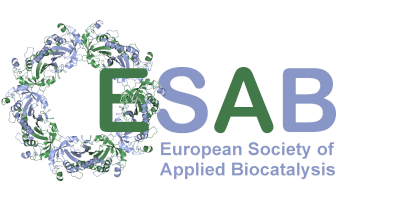Retracing the Rapid Evolution of an Herbicide-Degrading Enzyme by Protein Engineering
Abstract
The mechanisms underlying the rapid evolution of novel enzymatic activities from promiscuous side activities are poorly understood. Recently emerged enzymes catalyzing the catabolic degradation of xenobiotic substances that have been spread out into the environment during the last decades provide an exquisite opportunity to study these mechanisms. A prominent example is the herbicide atrazine (2-chloro-4-ethylamino-6-isopropylamino-1,3,5-triazine), which is degraded through a number of enzymatic reactions constituting the Atz pathway. Here, we analyzed the evolution of the hydroxyatrazine ethylaminohydrolase AtzB, a Zn(II)-dependent metalloenzyme that adopts the amidohydrolase fold and catalyzes the second step of the Atz pathway. We searched for promiscuous side activities of AtzB, which might point to the identity of its progenitor. These investigations revealed that AtzB has low promiscuous guanine deaminase activity. Furthermore, we found that the two closest AtzB homologues, which have not been functionally annotated up to now, are guanine deaminases with modest promiscuous hydroxyatrazine hydrolase activity. Based on sequence comparisons with the closest AtzB homologues, the guanine deaminase activity of AtzB could be increased by three orders of magnitude through the introduction of only four active site mutations. Interestingly, introducing the inverse four mutations into the AtzB homologues significantly enhanced their hydroxyatrazine hydrolase activity, and in one case is even equivalent to that of wild-type AtzB. Molecular dynamics simulations elucidated the structural and molecular basis for the mutation-induced activity changes. The example of AtzB highlights how novel enzymes with high catalytic proficiency can evolve from low promiscuous side activities by only few mutational events within a short period of time.
About the Speaker(s)
 Reinhard Sterner obtained his PhD in Biology from the University of Munich in 1991. He then worked as a postdoctoral fellow at the Biocentre of the University of Basel where he received his Habilitation in Biochemistry in 1996. Following a position as junior group leader at the University of Göttingen from 1997 to 1999, he operated as an Associate Professor of Biochemistry at the University of Cologne until 2003. Since 2004 he is a Professor of Biochemistry at the University of Regensburg. Professor Sterner’s research program focuses on the structure-function relationship of enzymes, the evolution and engineering of enzymes, and the analysis of allosteric interactions in multi-enzyme complexes.
Reinhard Sterner obtained his PhD in Biology from the University of Munich in 1991. He then worked as a postdoctoral fellow at the Biocentre of the University of Basel where he received his Habilitation in Biochemistry in 1996. Following a position as junior group leader at the University of Göttingen from 1997 to 1999, he operated as an Associate Professor of Biochemistry at the University of Cologne until 2003. Since 2004 he is a Professor of Biochemistry at the University of Regensburg. Professor Sterner’s research program focuses on the structure-function relationship of enzymes, the evolution and engineering of enzymes, and the analysis of allosteric interactions in multi-enzyme complexes.
